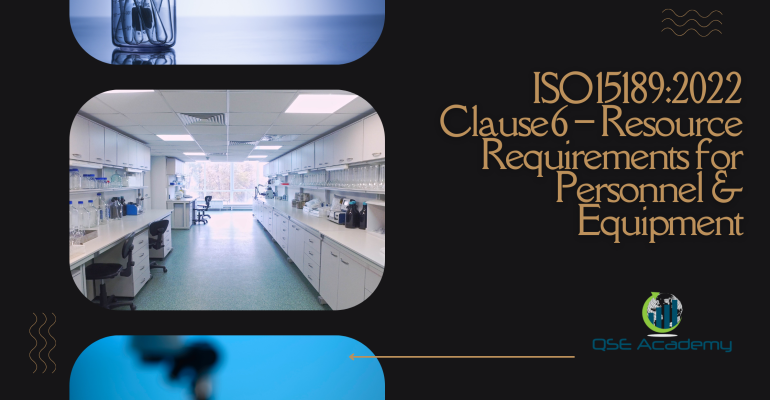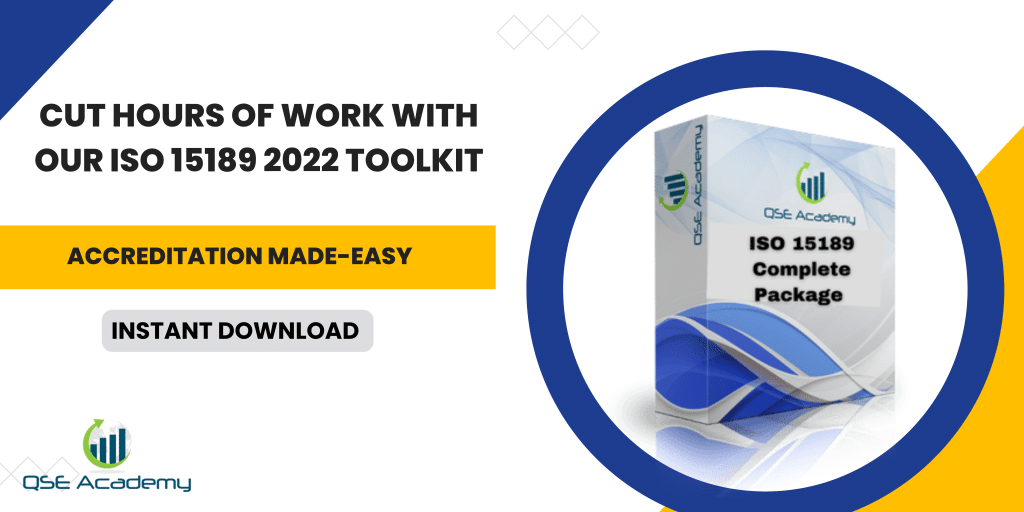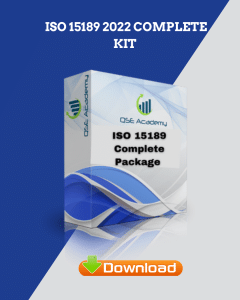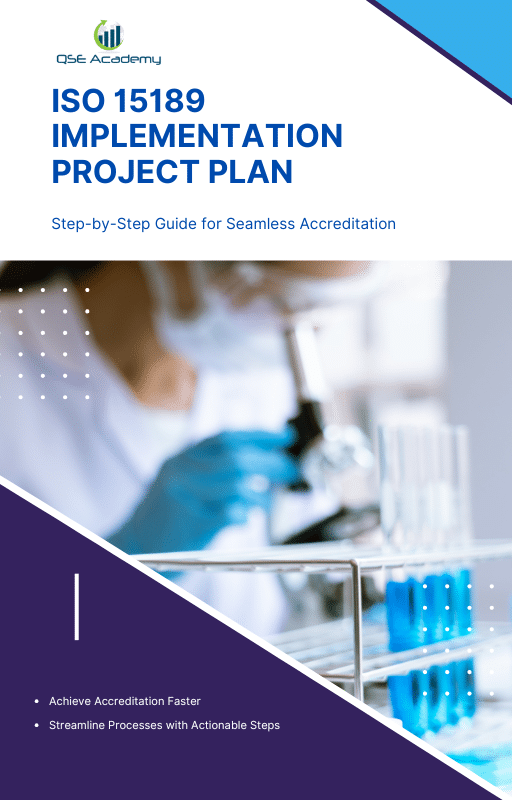ISO 15189:2022 Clause 6 – Resource Requirements for Personnel & Equipment
Last Updated on October 22, 2025 by Hafsa J.
Why Resources Make or Break Laboratory Competence
Every successful laboratory I’ve worked with has one thing in common — they invest as much attention in their resources as they do in their methods. Clause 6 of ISO 15189:2022 makes that clear. You can have the best SOPs in the world, but without qualified people and reliable equipment, consistency falls apart.
Here’s what I’ve noticed: labs often think of “resources” as budget items — staff, instruments, reagents. But to an assessor, they represent capability. The right resources prove that your lab can deliver accurate results, day after day, regardless of who’s on shift or which analyzer is running.
This section will help you understand how to turn your people, equipment, and environment into the backbone of your lab’s technical competence — not just for the audit, but for daily excellence.
What ISO 15189 Clause 6 Covers – The Core of Laboratory Capability
Clause 6 is where ISO 15189 gets practical. It asks one simple question: Does your lab have everything it needs to do its job right—every time?
That includes qualified people, reliable equipment, validated software, controlled environmental conditions, and enough materials to keep operations stable. In short, Clause 6 covers everything that affects the accuracy and reliability of your test results.
Here’s what I’ve seen trip up many labs: they focus heavily on procedures but overlook the basics—like uncalibrated pipettes, expired reagents, or staff without updated competency evaluations. Those are immediate red flags for assessors.
To stay compliant, your lab must:
-
Ensure all personnel are competent, authorized, and properly trained.
-
Maintain equipment that’s calibrated, serviced, and traceable to recognized standards.
-
Control environmental conditions that could affect test outcomes.
-
Validate software and information systems before use.
Pro Tip: Treat every resource as a potential quality risk. If something affects your ability to produce valid results—whether it’s a power fluctuation or staff shortage—it belongs in your risk register.
Common Pitfall: Thinking “available” equals “adequate.” Having equipment doesn’t prove compliance—controlling and documenting it does.
Personnel Requirements – Competence, Training, and Authorization
In every lab audit I’ve attended, one thing becomes clear fast—your people are your biggest strength and your biggest risk. Clause 6 starts with personnel because their competence directly determines the quality of your results.
Here’s what ISO 15189 expects:
-
Defined qualifications. Each role must have clear education, experience, and competency requirements.
-
Training programs. New staff must be trained on procedures, equipment, and quality policies before performing tasks independently.
-
Competency assessments. Regular evaluations confirm staff can consistently perform assigned tests.
-
Authorization. Only qualified personnel should release results, sign reports, or calibrate instruments.
In my experience, many labs assume a training certificate equals competence—but auditors want evidence of performance, not just attendance. That could mean observation records, test verifications, or re-assessments.
Pro Tip: Build a Competency Matrix mapping each staff member to the tests and instruments they’re approved for. It’s a simple table that shows assessors your lab operates with control and accountability.
Common Mistake: Forgetting to reauthorize staff after introducing new equipment or methods. Every change triggers a need for retraining and updated competency verification.
Staffing and Workload Management – Avoiding Burnout and Errors
You can have the most skilled people in the world, but if they’re stretched too thin, mistakes are inevitable. Clause 6 recognizes that staffing levels directly affect quality. When workloads are unbalanced, fatigue sets in, and even the best-trained technician can miss a detail that leads to a nonconforming result.
Here’s what I’ve noticed in real labs: when schedules are tight and people multitask beyond their capacity, documentation starts to slip first, then accuracy follows. It’s not a discipline issue—it’s a resource issue.
To comply (and stay sane), you should:
-
Monitor workload regularly. Track test volumes per shift or per person. If turnaround times start slipping, that’s your signal to review staffing levels.
-
Cross-train staff. When multiple people are competent in the same test area, you build flexibility into your schedule and reduce stress.
-
Plan for absences. Temporary reassignments or relief staff should be part of your risk management plan.
Pro Tip: During management review, include “Workload vs. Staffing” as a standing agenda item. It demonstrates to auditors that leadership monitors the human side of quality.
Example: A clinical lab I worked with cut sample errors by 40% just by adjusting shift rotations and ensuring no analyst worked more than three consecutive late shifts.
Common Pitfall: Ignoring staff fatigue. ISO 15189 may not use the word “burnout,” but assessors know overworked staff can’t deliver reliable results.
Equipment and Reagents – Selection, Calibration, and Maintenance
Here’s the truth—your lab’s credibility is only as strong as the tools you rely on. Clause 6 expects every piece of equipment, reagent, and material to be fit for purpose, traceable, and under control. That means from the moment you buy it until the day it’s decommissioned, there’s a clear record of its performance.
I’ve seen this catch many labs off guard. They’ll have calibration certificates in a binder, but no evidence that the equipment was verified before use—or that it stayed within tolerance between calibrations. Assessors notice that immediately.
Here’s what ISO 15189 expects you to manage:
-
Selection and installation: Choose instruments suited to your scope and environment. Document acceptance testing before routine use.
-
Calibration and verification: Calibrate using standards traceable to national or international references, and verify accuracy after servicing.
-
Maintenance: Follow manufacturer schedules and keep service reports on file.
-
Reagents and consumables: Store, label, and verify before use—especially those with expiration dates or sensitivity to temperature.
Pro Tip: Keep an Equipment Lifecycle File for each instrument. It should include purchase records, calibration certificates, maintenance logs, and decommissioning notes. Auditors love seeing this level of organization.
Common Mistake: Forgetting to review supplier calibration certificates. Always check that they reference traceability and include uncertainty values.
Example: One hematology lab I worked with moved all calibration and maintenance data into a shared digital log. It reduced missed calibration dates by 100% and made audit preparation nearly effortless.
Environmental and Facility Conditions – Supporting Reliable Results
Your test accuracy doesn’t just depend on equipment—it depends on the environment surrounding it. Clause 6 of ISO 15189 makes it clear: if your temperature, humidity, or layout interfere with results, you’re out of compliance.
I’ve seen this firsthand. A small lab once struggled with inconsistent PCR results. The issue wasn’t the reagents—it was an unmonitored air-conditioning system fluctuating between 18°C and 26°C. Once they installed temperature logging and stability alarms, their accuracy improved instantly.
Here’s what you need to control:
-
Environmental conditions: Monitor and record temperature, humidity, and airflow, especially in sensitive areas.
-
Cleanliness and contamination control: Define cleaning schedules, PPE requirements, and material flow to prevent cross-contamination.
-
Facility layout: Design workspaces to separate pre- and post-analysis areas and ensure logical workflow.
-
Lighting and ventilation: Maintain consistent illumination and airflow to support both staff comfort and analytical performance.
Pro Tip: Keep environmental monitoring logs in your audit folder. They’re simple, but auditors always ask for them first when reviewing facility compliance.
Common Pitfall: Forgetting to review environmental data trends. Spot checks aren’t enough—ISO 15189 expects continuous control.
Example: One lab introduced automated temperature monitoring linked to email alerts. Not only did it help maintain compliance, but it also prevented reagent loss worth thousands during a power outage.
Information Systems and Software – Ensuring Data Integrity
In today’s laboratories, software is just as critical as microscopes. Clause 6 recognizes that your Laboratory Information Management System (LIMS), spreadsheets, or any digital tools directly influence test accuracy and confidentiality.
Here’s what I’ve noticed: many labs trust their systems completely but can’t prove they’re reliable. ISO 15189 requires that every information system—manual or electronic—be validated, secure, and traceable.
Here’s how to stay compliant:
-
Validate before use. Confirm that your LIMS or software works as intended, especially after updates or configuration changes.
-
Control access. Assign user roles and unique logins. Shared passwords are a major red flag for assessors.
-
Ensure data backup and recovery. Establish backup schedules and test your recovery process regularly.
-
Protect data integrity. Restrict editing of finalized results and maintain audit trails for any changes.
Pro Tip: Keep a LIMS Validation Report on file—it should show test cases, expected outcomes, and approval signatures. Assessors often ask for it to verify system reliability.
Common Mistake: Relying solely on vendor documentation. Even if a vendor claims “ISO compliant,” your lab must independently validate how that software performs in your environment.
Example: One diagnostics lab discovered during an audit that their LIMS allowed users to overwrite results without logging changes. After implementing version tracking and access control, they not only fixed the issue but gained stronger traceability.
Resource Monitoring and Continuous Improvement
Clause 6 doesn’t stop at “having” resources — it expects you to monitor and improve them. The idea is simple: competence, equipment, and facilities must remain reliable over time. A one-time calibration or training session won’t cut it.
Here’s what I’ve seen in high-performing labs: they treat resource monitoring like an ongoing feedback loop. They track performance indicators such as staff turnover, instrument downtime, reagent wastage, and training completion rates. When a trend starts dipping, they act before it becomes an audit finding.
Here’s how to make that part of your system:
-
Set measurable KPIs. Examples: equipment uptime %, number of staff training hours, or calibration delay frequency.
-
Review regularly. Discuss these indicators during management reviews and internal audits.
-
Document improvements. Record every change made to address a resource-related issue—this shows continuous improvement in action.
Pro Tip: Create a Resource Review Log. List what was checked, the outcome, and actions taken. It’s simple but powerful evidence that your lab stays in control of its resources.
Example: One diagnostic center noticed recurring calibration delays. By assigning one “resource custodian” per department, they reduced downtime by 70% and impressed assessors with their proactive system.
Common Pitfall: Monitoring without analysis. Collecting data isn’t enough—ISO 15189 expects you to use it to drive decisions.
FAQs – ISO 15189 Clause 6 Resource Requirements
Q1: What’s the most common reason labs fail Clause 6?
In my experience, it usually comes down to poor documentation. Labs might have competent staff and working instruments, but they can’t prove it. Missing calibration records, outdated training files, or incomplete maintenance logs are all red flags for assessors.
Q2: How often should staff competence be evaluated?
At least once a year—and whenever new methods, instruments, or technologies are introduced. Think of it as an ongoing process, not a one-time certification. Competence should grow with your lab’s scope of work.
Q3: Can outsourced calibration or maintenance meet ISO 15189 requirements?
Yes, absolutely—if the provider is qualified. Always check that their certificates are traceable to national or international standards, and keep those records under your document control system.
Q4: What’s the easiest way to prove Clause 6 compliance during an audit?
Keep it visual and organized. Have your competency matrix, equipment calibration tracker, and environmental logs in one place. When auditors see you can pull up evidence in seconds, it signals control and confidence.














